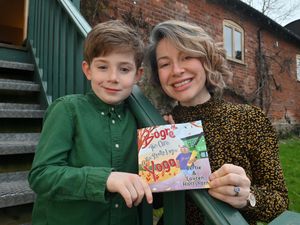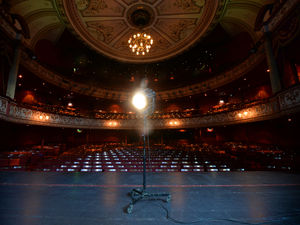The dawn of the Dredd: Meet comic book writer John Wagner
The profile of comic books has risen significantly over the last few years.
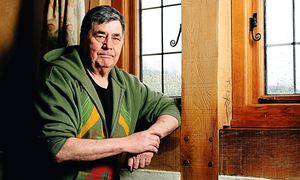
Super hero movies are a regular fixture on cinema screens and television shows such as The Walking Dead have given stories found in books a wider audience.
The great and the good of the comic book world will this weekend be descending upon the West Midlands for Comics Salopia – the UK’s answer to the famous Angoulême International Comics Festival held in France.
One of those appearing over the weekend will be John Wagner the creator and writer of the comic character Judge Dredd.
John lives nestled deep in the Shropshire hills in a large house surrounded by fields with alpacas and horses grazing in them. It’s the furthest possible thing you could imagine from the dystopian Mega-City One in which Dredd patrols.
“If it was a nice day you could see why I live here, the views are spectacular,” says John Wagner in his rumbling Scottish accent. “You can see the Stiperstones and The Callow, it’s beautiful.”
This comic book pioneer moved to the West Midlands more than 20 years ago when his partner Jenny O’Connor came here with Peppa Pig publisher Redan, based in Shrewsbury’s Abbey Foregate.
This bucolic landscape is far removed from the powerful scenery depicted in his work. He is best known as the creator of square-jawed lawman Dredd, but was also responsible for A History of Violence, which also found its way to the silver screen.
The West Midlands and Shropshire have become an enclave for comic creatives – The Walking Dead illustrator Charlie Adlard also lives in Shrewsbury and is the patron of Comics Salopia.
Sitting in his conservatory high above the rolling hills we talk about how John’s work has been reflected on-screen.
“I’ve only ever seen it once, I won’t watch it again,” says John of the 1995 Dredd film starring Sylvester Stallone, Rob Schneider and Diane Lane.
“I thought the CGI was great and the money they put into it to recreate the city was wonderful, but the story and the characters had nothing to do with Judge Dredd.
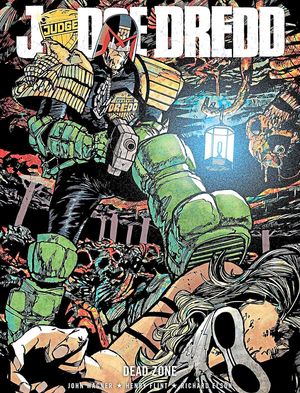
“The first movie helped me to buy my first house though, so there’s that.”
John’s opinion is not uncommon – the film received a rough reception from critics – but it carries weight. It was he, along with artist Carlos Esquerra, who created the character for the 2000 AD comic book series.
“A lot of creating a character comes down to what you think your audience wants,” said John, who, when editing the comic Valiant, also created an anti-hero policeman called One-Eye Jack.
“We used to put a voting form in the comic, and when readers sent in letters they would tell us their top three stories. One-Eyed Jack instantly became the top story in the comic – he was a tough anti-hero cop and that bought home to me how popular such stories were. When you can combine hero and villain in one character, what a good character you have. That is what helps to make Judge Dredd so popular – he’s hero and villain.”
The first script John, now 70, wrote included the story of a man spotted jay walking by Dredd, who then brutally ran him down for his misdemeanours.
Putting on a New York accent John mimics Dredd: “I remember him saying ‘You’ve got five seconds to crawl to the kerb’.
“Of course he didn’t make it to the kerb so was killed. They never used that script. In fact, the story’s been toned down a lot since those heady early days, and quite rightly, but Dredd is still a man you wouldn’t want to mess with.”
He smiles: “My children used to think Judge Dredd was based on me.”
Despite the Stallone shocker, John was delighted with the 2012 film Dredd.
Directed by Pete Travis and written by Alex Garland, whose other works include The Beach and Ex Machina.
John was a consultant. In fact a meeting between Garland and John at The Peach Tree restaurant in Shrewsbury got a nod in the film – the block of flats around which the action centres is called Peach Trees.
“The second Dredd was made on about a fifth of the budget and made a much better film – I wish they’d had the first film’s budget,” John said.
Karl Urban in Alex Garland’s 2012 film Dredd added. “But Alex Garland had the genius to know they didn’t have the budget so could only afford one big set. And that was Peach Trees.”
A History Of Violence, which starred Viggo Mortensen and Ed Harris, is perhaps the film of John’s work that has received the most acclaim. The 2005 American crime thriller was directed by David Cronenberg and received a plethora of awards nominations, but it’s not a project to which John feels particularly attached.
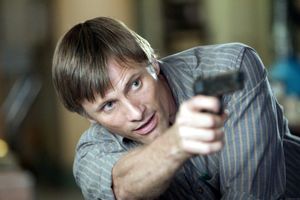
“Once they bought the rights they didn’t want to know what I thought,” he said. “In fact David Cronenberg, until the end of filming, didn’t know it was based on a comic. But they paid quite a lot of money up front. Take the money and run, I don’t mind doing that.
“I thought they made a pretty good job of it. I didn’t agree with the final act, but I understand why they changed it, because my A History of Violence was probably too violent for them.”
He also dislikes the BBC adaptation of John and writer Alan Grant’s The Bogie Man, which aired on Christmas Eve in 1992 starring Robbie Coltrane, but clashing with Gorillas in the Mist.
“Fortunately a lot of people didn’t see it,” he says. “They made such a hash of it that I don’t even think about it any more.”
Nonetheless, John still hopes to see another piece adapted for the screen – he says his 2000AD-published thriller Button Man is in the in-tray of Netflix, who are planning a series of films based on it. It comes amid increasing overlap between the comic and movie industries.
As a writer John is proud to see his characters leading blockbusters.
“Films have given comics a respectability,” he said. “In the 60s, 70s and 80s, comics were a regular punching bag for middle class newspapers.
“Now attitudes have changed a bit and they are regarded in many areas as being worthwhile. I’m happy about the crossover of film and comics and glad we can feed off each other.”
John’s passion for the form developed in the 60s when he was a paper boy in Scotland.
He would read the strips ,in the newspapers before putting the now dog-eared copies through doors.
He got a job at a printers as a young executive before becoming an editorial assistant at Dandy publisher DC Thomson in Dundee.
“After a year or two I went freelance, working on one page funnies for the likes of Whizzer & Chips and stories for girls comics. Eventually I got a job at IPC in London editing magazines.
“I resigned in 1976 to return to the freelance life, where I’ve been ever since. That year I wrote the first episode of Judge Dredd, drawn by Carlos Ezquerra. Many other writers and artists have contributed their ideas to the story ever since.”
John has also written strips about well-known sci-fi characters like Boba Fett, the Star Wars bounty hunter, plus Alien, Predator and Batman, but prefers the freedom of his own characters.
He now works on Rok of the Reds alongside Alan Grant and illustrator Dan Cornwell. It’s about the world’s first alien footballer – although his random selection process almost threw up something more risque.
“I wanted to do something new so I went to the file, the first thing I pulled out was a sci-fi porn story Alan Grant and I had written,” he laughed.
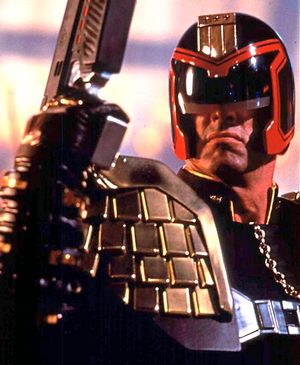
“I thought ‘that’s pretty good’ – it was a bit like a Carry On movie in space, but I couldn’t get an artist willing to draw it. I went back to the file and found Rom of the Rovers, a play on Roy of the Rovers, which eventually turned into Rok of the Reds.”
John believes that comic books hold real educational values.
“Comics are not only a near-bottomless font of diversity and entertainment, they are also a hugely valuable teaching resource,” he says.
“They are in many ways - for children, learners, hesitant readers - more accessible than pure text. Pictures and words together. The pictures help to carry and explain the story and make the reading process more enjoyable and easy, and before long it becomes natural.
“A friend who had trouble getting her nine-year-old to read anything gave him a copy of the Rok of the Reds graphic novel. A few days later she asked me for another copy as she now can’t get it back from him.”
John is now free to do the work he likes, although he does dabble in writing the occasional Judge Dredd story. But he added: “I’m not intending to do many more.”
Comics Salopia runs across various locations in Shrewsbury over Saturday and Sunday and other guests include Marvel writer Christian Ward, Jurassic Park logo creator Chip Kidd, Charlie Adlard himself, The Beano editor John Anderson and Star Wars writer Kieron Gillen to name just a few.

